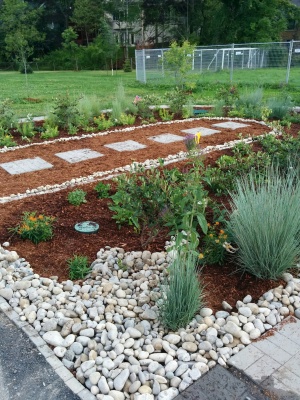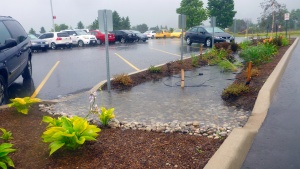Difference between revisions of "Stone"
Jump to navigation
Jump to search
Kyle menken (talk | contribs) m |
Kyle menken (talk | contribs) m |
||
| Line 2: | Line 2: | ||
[[File: IMAX_Stone_Inlet.jpeg|thumb|This bioswale in a parking lot uses stone at the inlets and along the bottom of the swale to prevent erosion, as the sides are sloped.]] | [[File: IMAX_Stone_Inlet.jpeg|thumb|This bioswale in a parking lot uses stone at the inlets and along the bottom of the swale to prevent erosion, as the sides are sloped.]] | ||
| − | Stone or gravel can serve as a low maintenance decorative feature, but it may also serve many practical functions in an LID practice. For advice on aggregates used in [[Underdrains|underdrains]], see [[Gravel|gravel]] | + | Stone or gravel can serve as a low maintenance decorative feature, but it may also serve many practical functions in an LID practice. For advice on aggregates used in [[Underdrains|underdrains]], see [[Gravel|gravel]]. |
{|class="wikitable" | {|class="wikitable" | ||
Revision as of 10:04, 10 January 2018
Stone or gravel can serve as a low maintenance decorative feature, but it may also serve many practical functions in an LID practice. For advice on aggregates used in underdrains, see gravel.
| Function | Recommended Specification |
|---|---|
| Subsurface storage layer for stormwater and to surround the underdrain or subdrain |
|
| Dissipate flow and prevent erosion at inlets and outlets |
|
| Direct and spread flow throughout a large LID facility or to protect narrow channel sections where flow will concentrate |
|

